We have combatted much of our flu within the shelter by reducing the stress that cats are under while they are here. We rarely have a cat coming down with flu in the Centre and it’s been a long time since we have seen a ‘flu outbreak’. However, being an open intake shelter we do have cats, or more frequently, litters of kittens, coming in with the telltale signs of sore/weepy eyes, sneezing, and nose discharge. Often this is indicative of a poor start to life… poor nutrition and high levels of stress.
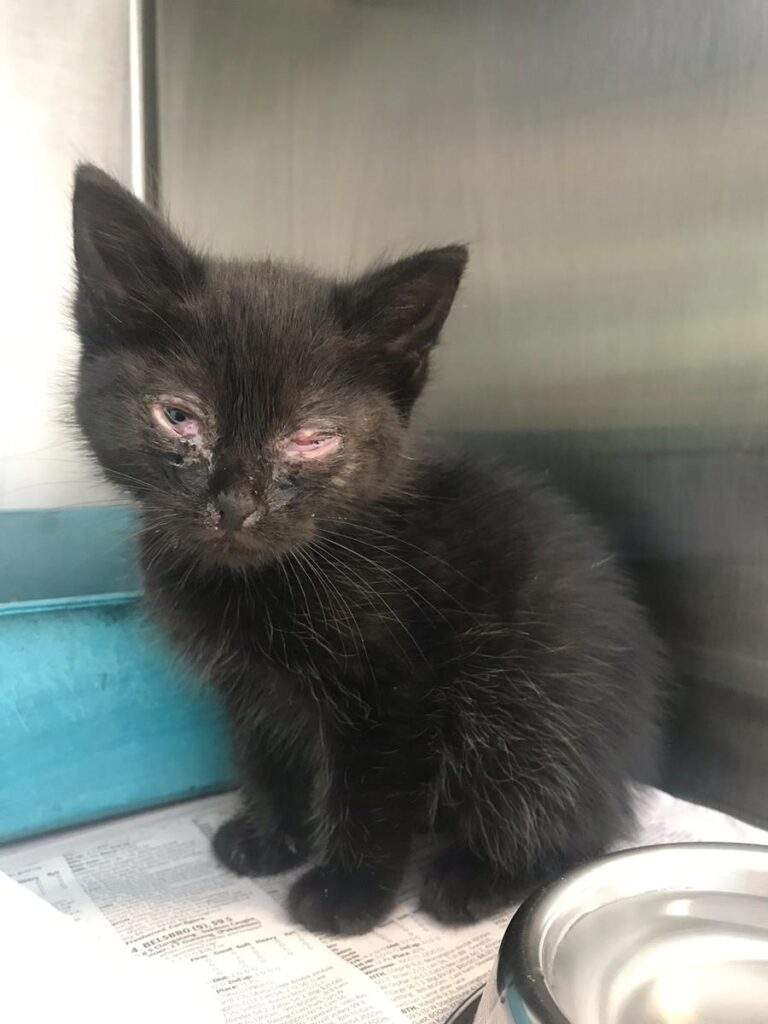
Treatment occurs in foster where we use eye drops and antibiotics, where required, to help with symptoms. More recently we started using nasal flushes for severe cases of nasal congestion (i.e. blocked noses!). This helps to flush out pockets of pus, debris, and bacteria from the nasal sinuses and allows the mucosa to heal.
Some of our patients:
Honni
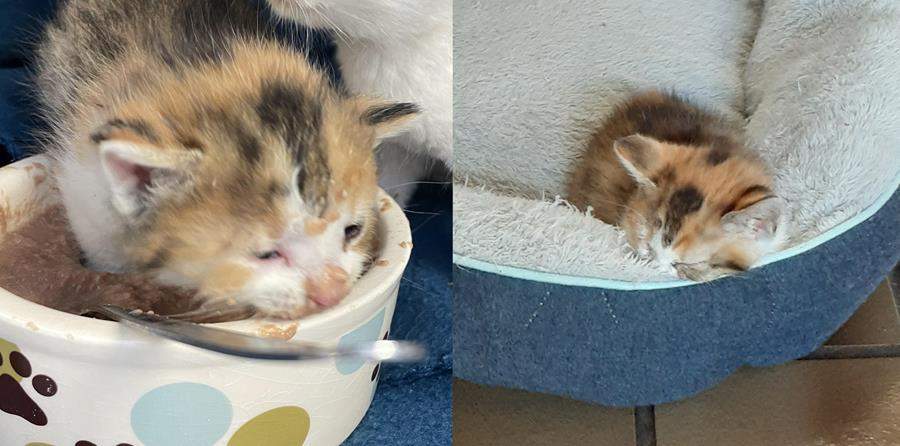
Honni was definitely the runt of her litter. She was much smaller than her litter mates and had some significant set backs along her path through the shelter. Honni was only 380 grams at six weeks of age, had very poor body condition, and a serious case of cat flu.
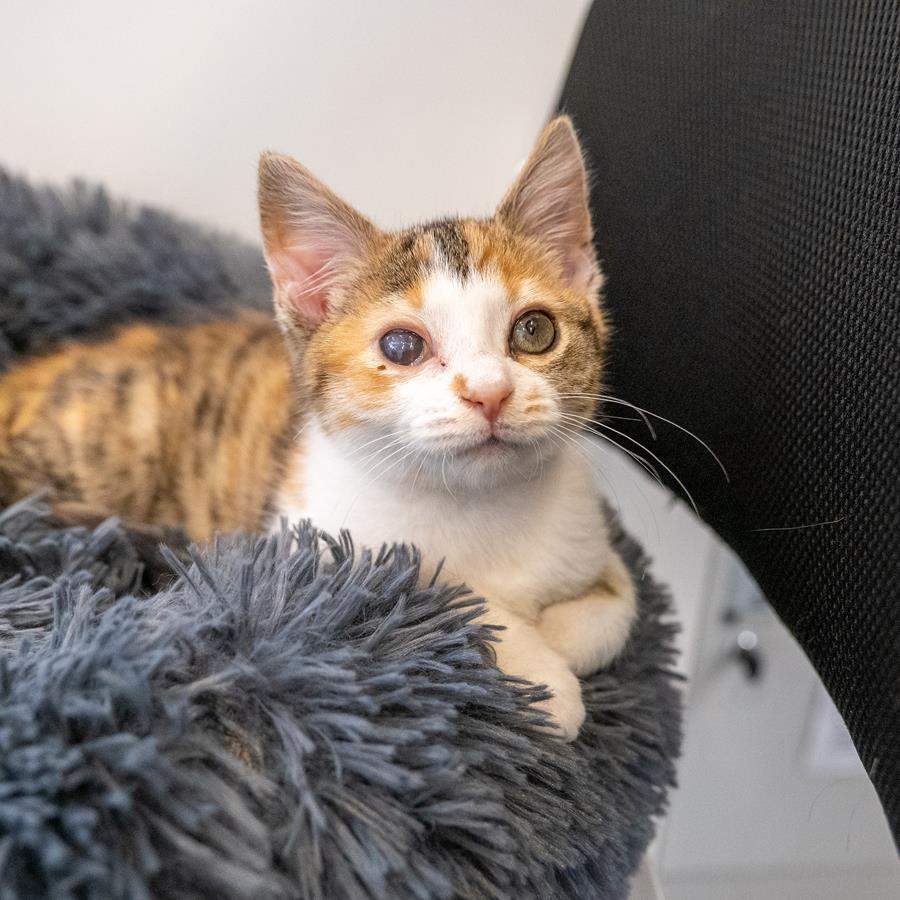
Honni ended up being in foster care for over three months. Her carer has done a great job with many trips to the centre for vet checks and two trips to the after hours vet when Honni needed immediate vet care. She has slowly grown and improved her body condition.
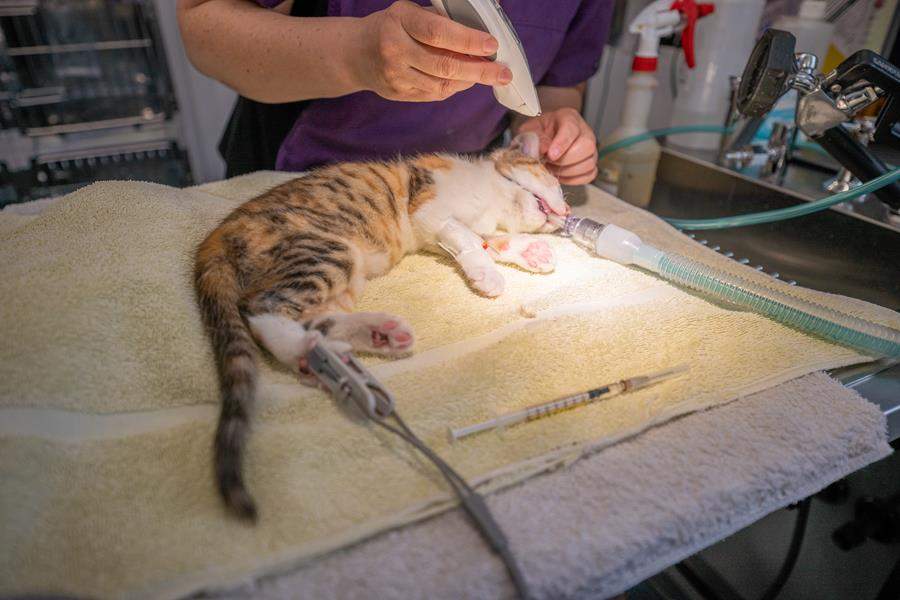
Unfortunately, her eye could not be saved post flu infection and it needed removal once she was big and strong enough to have surgery.
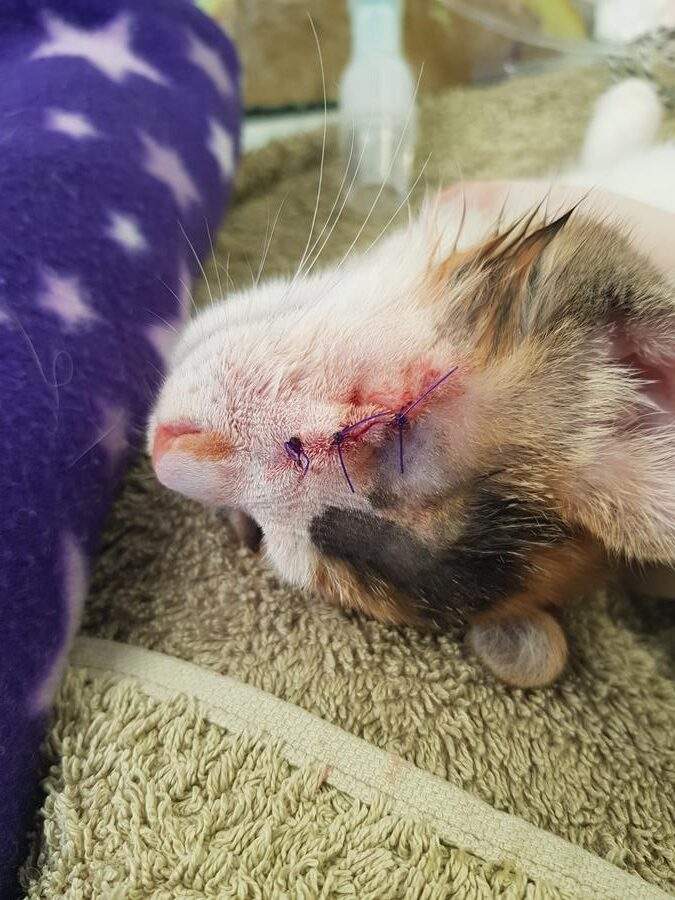
Honni is a funny, tough little girl who wins everyone over with her big personality, her one eye, and her short front legs!
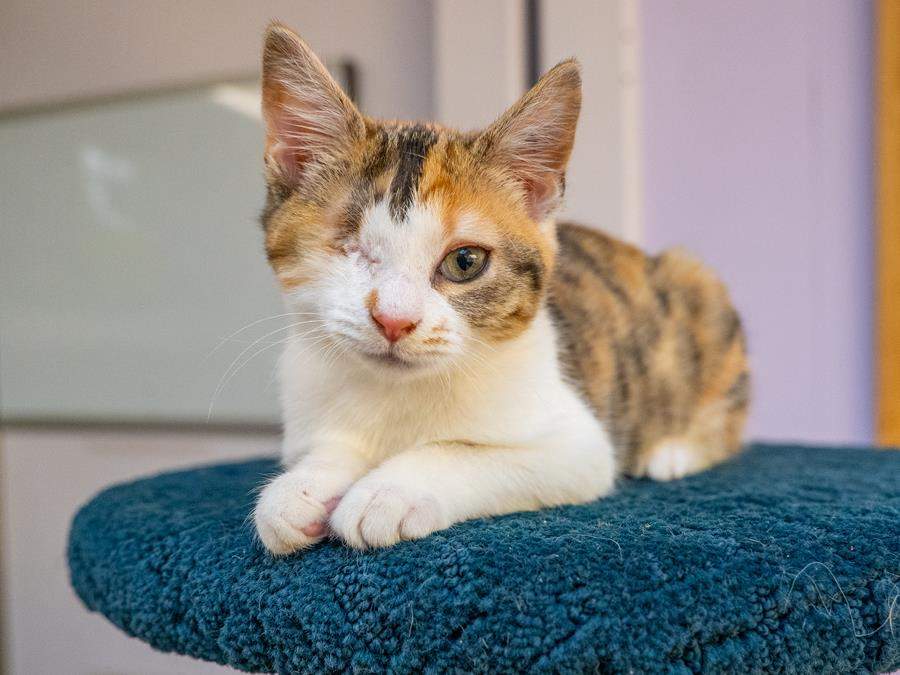
After being desexed Honni became available for adoption and quickly found her forever home.
Quinn
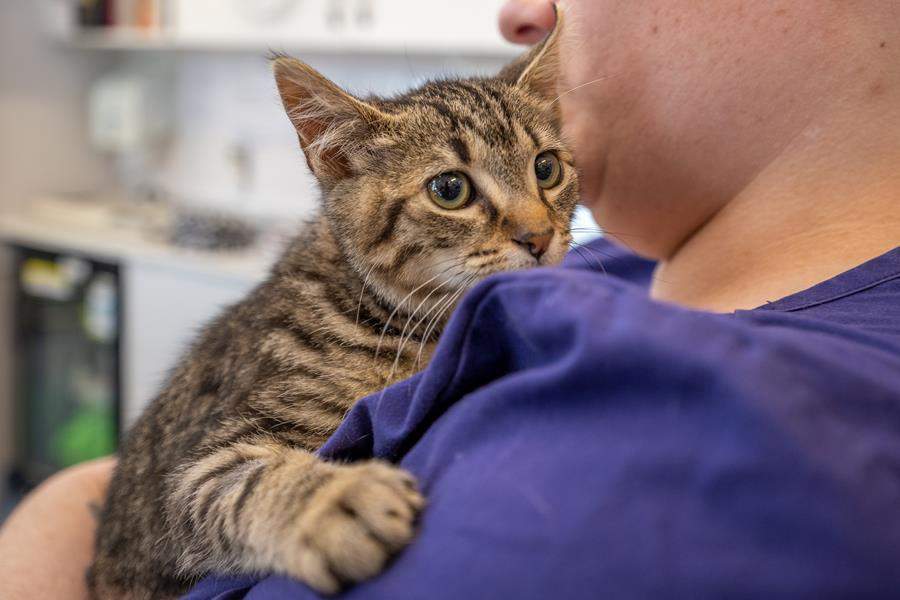
Quinn came in as a very scared little kitty. He had some waxing and waning symptoms and seemed a little dehydrated on both his first and second checks. He was rushed into us on around day 10 of care with severe vomiting and lethargy that had developed overnight. Quinn was flat, dehydrated, and on abdominal palpation, a soft tissue mass could be felt.
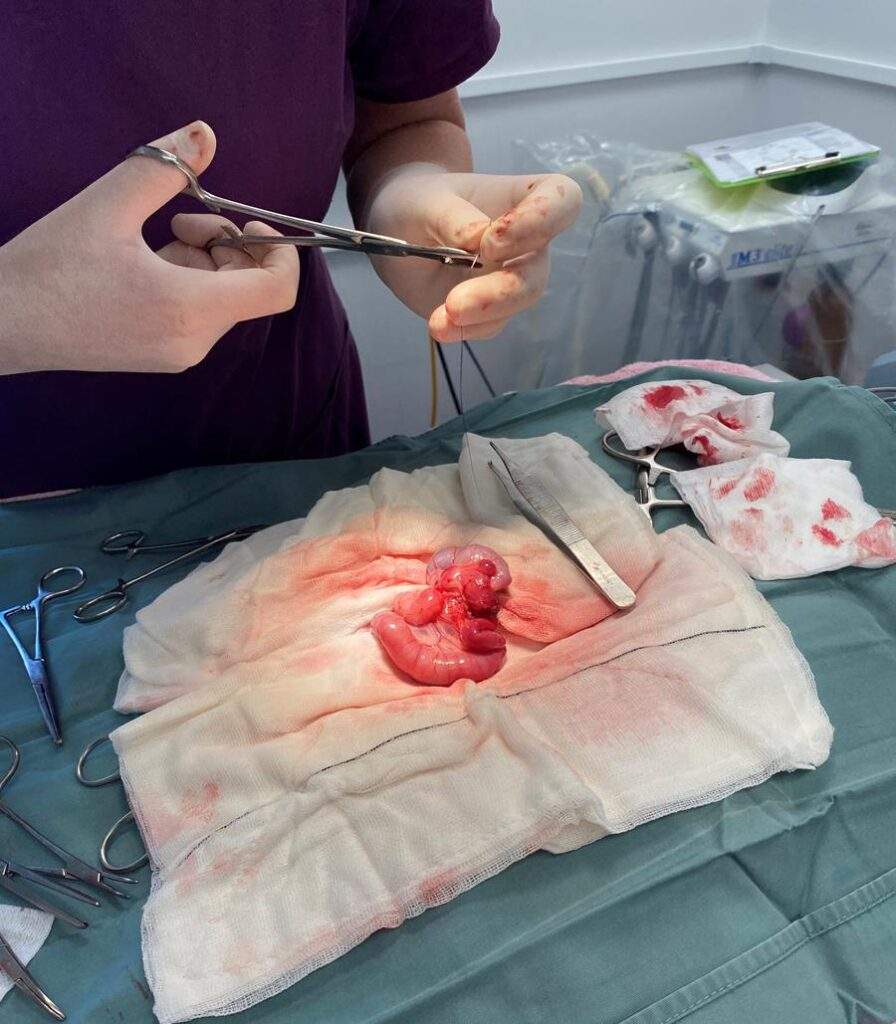
The vet team carried out an exploratory laparotomy (having a look in the abdominal cavity under general anaesthetic) that afternoon. As expected, we found an intussusception of the small intestine. This is where one piece of intestine telescopes inside an adjacent piece forming a blockage. Quinn required around 7cms of small intestine to be resected.
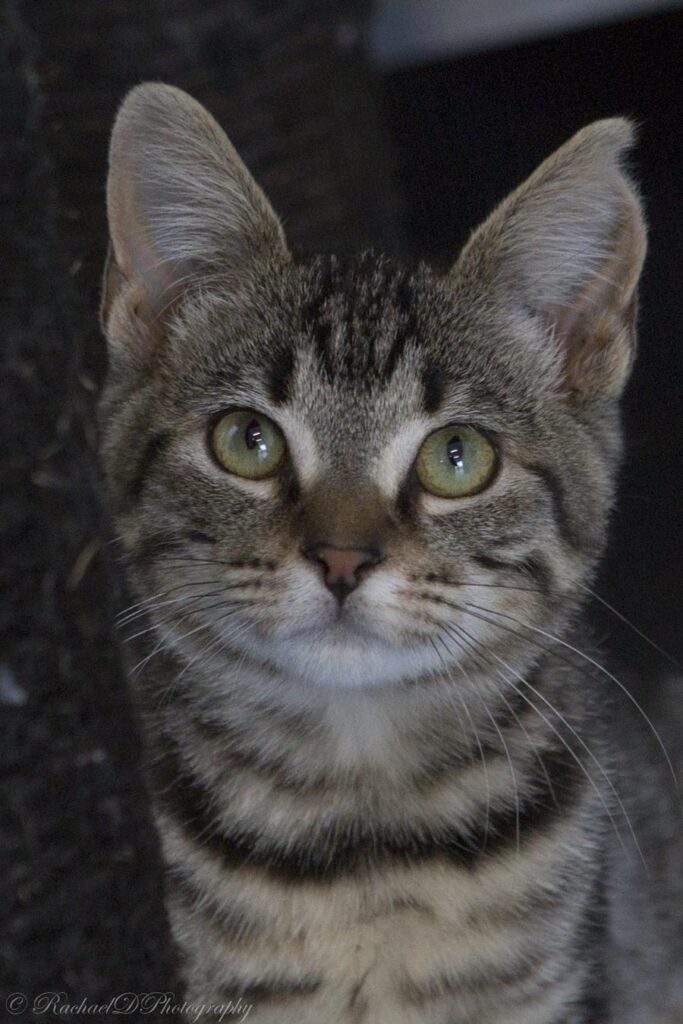
Quinn recovered well in foster care and hasn’t looked back! Unsurprisingly, this special little guy touched the hearts of all the staff and volunteers at Ten Lives and ultimately the family who adopted him!
BONUS: Behind the Scenes
Castration
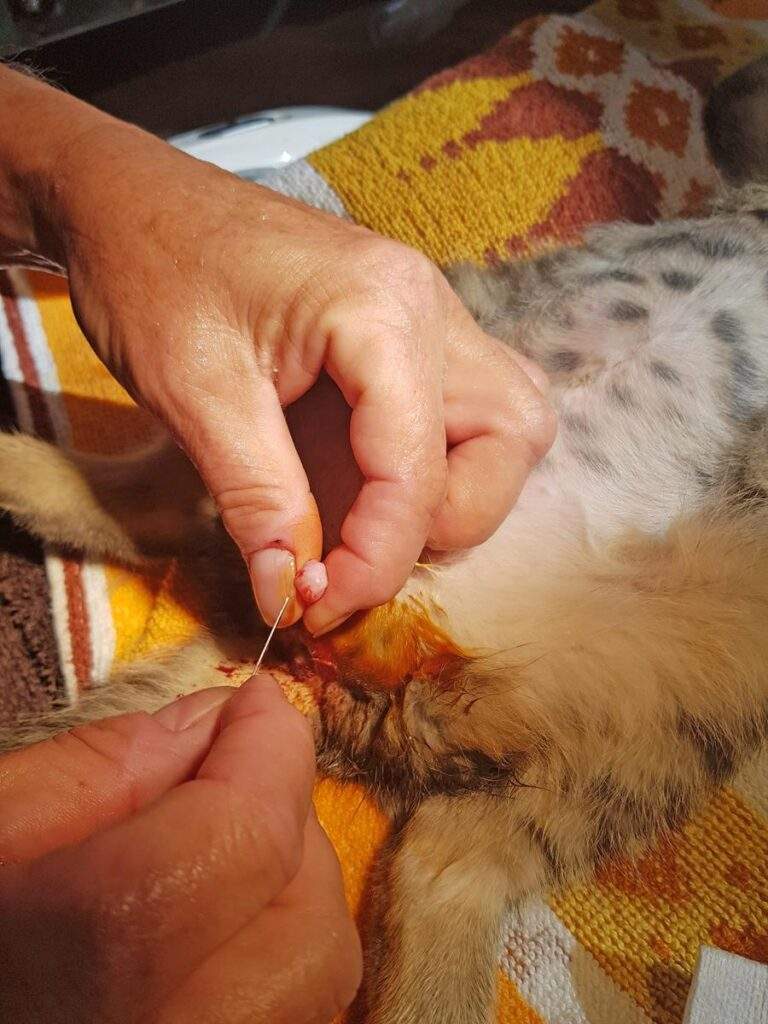
Pictured here is a 12 week old kitten being castrated.
Castration or desexing of a male cat or kitten involves a general anaesthetic and surgical removal of the testicles. It is a quick procedure and no sutures are places. Recovery is also quick with the cat getting back to normal within a day or two. Castration prior to sexual maturity reduces behavioural issues such as spraying, roaming, and fighting.
As a V.E.T.S. Club member it is your subscription that allows the Ten Lives vet team to provide the much needed care that Gordon received – and for cats just like him. So, Thank you.




